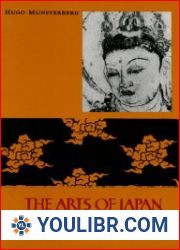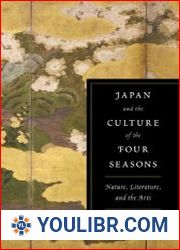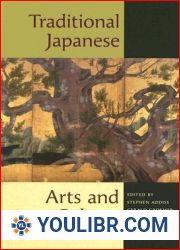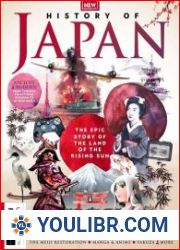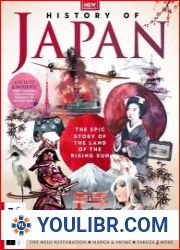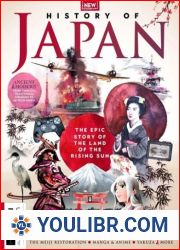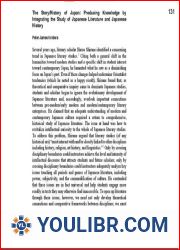
BOOKS - CULTURE AND ARTS - Arts of Japan An Illustrated History

Arts of Japan An Illustrated History
Author: Hugo Munsterberg
Year: 2012
Format: EPUB | PDF
File size: 22 MB
Language: ENG
Year: 2012
Format: EPUB | PDF
File size: 22 MB
Language: ENG
The book "Arts of Japan: An Illustrated History" provides an in-depth exploration of the rich cultural heritage and history of Japanese art, delving into the various influences that have shaped its development over the centuries. The text offers a comprehensive overview of the evolution of Japanese art, covering painting, sculpture, architecture, and handicrafts, and examining the impact of Indian and Chinese schools, as well as the pervasive influence of Zen philosophy. This book offers readers a well-rounded understanding of the significant contributions of Japanese art to world culture. To truly appreciate the beauty and depth of Japanese art, it is essential to study and understand the process of technological evolution. This involves recognizing the need for a personal paradigm for perceiving the technological process of developing modern knowledge as the basis for human survival and unity in a warring state. By doing so, we can gain a deeper appreciation for the intricate relationships between technology, culture, and society, and how they have evolved over time. One of the key aspects of Japanese art is its ability to adapt and incorporate elements from other cultures, while maintaining its unique identity. For example, the country's exposure to Buddhism and Confucianism from China and India has significantly influenced its artistic expression, as seen in the use of motifs such as dragons, phoenixes, and cherry blossoms.
Книга «Искусство Японии: иллюстрированная история» содержит глубокое исследование богатого культурного наследия и истории японского искусства, углубляясь в различные влияния, которые формировали его развитие на протяжении веков. Текст предлагает всесторонний обзор эволюции японского искусства, охватывающий живопись, скульптуру, архитектуру и рукоделие, а также исследует влияние индийских и китайских школ, а также всепроникающее влияние философии дзэн. Эта книга предлагает читателям всестороннее понимание значительного вклада японского искусства в мировую культуру. Чтобы по-настоящему оценить красоту и глубину японского искусства, необходимо изучить и понять процесс технологической эволюции. Это предполагает признание необходимости личностной парадигмы восприятия технологического процесса развития современных знаний как основы выживания и единства человека в воюющем государстве. Поступая таким образом, мы можем глубже оценить сложные отношения между технологией, культурой и обществом, а также то, как они развивались с течением времени. Одним из ключевых аспектов японского искусства является его способность адаптироваться и включать элементы других культур, сохраняя при этом свою уникальную идентичность. Например, подверженность страны буддизму и конфуцианству из Китая и Индии значительно повлияла на её художественное выражение, что видно в использовании таких мотивов, как драконы, фениксы и цветение сакуры.
livre « L'art du Japon : une histoire illustrée » contient une étude approfondie du riche patrimoine culturel et de l'histoire de l'art japonais, en approfondissant les différentes influences qui ont façonné son développement au fil des siècles. texte offre un aperçu complet de l'évolution de l'art japonais, couvrant la peinture, la sculpture, l'architecture et l'artisanat, et explore l'influence des écoles indiennes et chinoises, ainsi que l'influence omniprésente de la philosophie zen. Ce livre offre aux lecteurs une compréhension complète de la contribution importante de l'art japonais à la culture mondiale. Pour vraiment apprécier la beauté et la profondeur de l'art japonais, il est nécessaire d'étudier et de comprendre le processus d'évolution technologique. Cela implique la reconnaissance de la nécessité d'un paradigme personnel de la perception du processus technologique du développement des connaissances modernes comme base de la survie et de l'unité de l'homme dans un État en guerre. Ce faisant, nous pouvons mieux apprécier les relations complexes entre la technologie, la culture et la société, ainsi que la façon dont elles ont évolué au fil du temps. L'un des aspects clés de l'art japonais est sa capacité à s'adapter et à intégrer des éléments d'autres cultures, tout en conservant son identité unique. Par exemple, l'exposition du pays au bouddhisme et au confucianisme en provenance de Chine et d'Inde a considérablement influencé son expression artistique, ce qui est visible dans l'utilisation de motifs tels que les dragons, les phoenix et la fleur de sakura.
libro «arte de Japón: historia ilustrada» contiene una profunda investigación sobre el rico patrimonio cultural y la historia del arte japonés, profundizando en las diversas influencias que han dado forma a su desarrollo a lo largo de los siglos. texto ofrece una revisión completa de la evolución del arte japonés, que abarca pintura, escultura, arquitectura y artesanía, y explora la influencia de las escuelas indias y chinas, así como la influencia omnipresente de la filosofía zen. Este libro ofrece a los lectores una comprensión completa de la importante contribución del arte japonés a la cultura mundial. Para apreciar realmente la belleza y profundidad del arte japonés, es necesario estudiar y comprender el proceso de evolución tecnológica. Esto implica reconocer la necesidad de un paradigma personal para percibir el proceso tecnológico del desarrollo del conocimiento moderno como base de la supervivencia y unidad del hombre en un Estado en guerra. Al hacerlo, podemos apreciar más profundamente las complejas relaciones entre la tecnología, la cultura y la sociedad, así como cómo han evolucionado a lo largo del tiempo. Uno de los aspectos clave del arte japonés es su capacidad para adaptarse e incorporar elementos de otras culturas, al tiempo que mantiene su identidad única. Por ejemplo, la exposición del país al budismo y confucianismo de China e India influyó significativamente en su expresión artística, lo que se ve en el uso de motivos como dragones, fénix y la floración del sakura.
O livro «Arte do Japão: uma história ilustrada» traz uma pesquisa profunda sobre o rico patrimônio cultural e a história da arte japonesa, aprofundando-se nas diferentes influências que moldaram seu desenvolvimento ao longo dos séculos. O texto oferece uma visão abrangente da evolução da arte japonesa, que abrange a pintura, a escultura, a arquitetura e o artesanato, além de explorar a influência das escolas indianas e chinesas, e a influência generalizada da filosofia zen. Este livro oferece aos leitores uma compreensão completa das contribuições significativas da arte japonesa para a cultura mundial. Para apreciar verdadeiramente a beleza e a profundidade da arte japonesa, é preciso explorar e compreender o processo de evolução tecnológica. Isso implica reconhecer a necessidade de um paradigma pessoal de percepção do processo tecnológico de desenvolvimento do conhecimento moderno como base para a sobrevivência e a unidade humana num estado em guerra. Ao fazermos isso, podemos avaliar mais profundamente as complexas relações entre a tecnologia, a cultura e a sociedade, e como elas evoluíram ao longo do tempo. Um aspecto fundamental da arte japonesa é sua capacidade de se adaptar e incluir elementos de outras culturas, mantendo sua identidade única. Por exemplo, a exposição do país ao budismo e confúcio da China e da Índia influenciou significativamente a sua expressão artística, como se vê no uso de motivos como dragões, fênix e a flor da sakura.
Il libro «L'arte del Giappone: una storia illustrata» contiene una ricerca approfondita sul ricco patrimonio culturale e sulla storia dell'arte giapponese, approfondendo le diverse influenze che hanno creato il suo sviluppo nel corso dei secoli. Il testo offre una panoramica completa dell'evoluzione dell'arte giapponese, che comprende la pittura, la scultura, l'architettura e l'artigianato, e esplora l'influenza delle scuole indiane e cinesi e l'influenza della filosofia zen. Questo libro offre ai lettori una piena comprensione del notevole contributo dell'arte giapponese alla cultura mondiale. Per apprezzare davvero la bellezza e la profondità dell'arte giapponese, è necessario studiare e comprendere l'evoluzione tecnologica. Ciò implica il riconoscimento della necessità di un paradigma personale della percezione del processo tecnologico di sviluppo della conoscenza moderna come base per la sopravvivenza e l'unità umana in uno stato in guerra. In questo modo possiamo valutare a fondo le complesse relazioni tra tecnologia, cultura e società, e come si sono evolute nel corso del tempo. Uno degli aspetti chiave dell'arte giapponese è la sua capacità di adattarsi e includere elementi di altre culture, pur mantenendo la sua identità unica. Ad esempio, l'esposizione del paese al buddismo e al confucianismo dalla Cina e dall'India ha influenzato significativamente la sua espressione artistica, come si vede nell'uso di motivi come draghi, fenici e la fioritura della sakura.
Das Buch The Art of Japan: A Illustrated History enthält eine eingehende Untersuchung des reichen kulturellen Erbes und der Geschichte der japanischen Kunst und geht dabei auf die verschiedenen Einflüsse ein, die ihre Entwicklung im Laufe der Jahrhunderte geprägt haben. Der Text bietet einen umfassenden Überblick über die Entwicklung der japanischen Kunst, umfasst Malerei, Skulptur, Architektur und Kunsthandwerk und untersucht den Einfluss indischer und chinesischer Schulen sowie den alles durchdringenden Einfluss der Zen-Philosophie. Dieses Buch bietet den sern einen umfassenden Einblick in den bedeutenden Beitrag der japanischen Kunst zur Weltkultur. Um die Schönheit und Tiefe der japanischen Kunst wirklich zu schätzen, ist es notwendig, den Prozess der technologischen Evolution zu studieren und zu verstehen. Dies setzt die Anerkennung der Notwendigkeit eines persönlichen Paradigmas der Wahrnehmung des technologischen Prozesses der Entwicklung des modernen Wissens als Grundlage des Überlebens und der Einheit des Menschen in einem kriegführenden Staat voraus. Auf diese Weise können wir die komplexen Beziehungen zwischen Technologie, Kultur und Gesellschaft sowie deren Entwicklung im Laufe der Zeit besser einschätzen. Ein wichtiger Aspekt der japanischen Kunst ist ihre Fähigkeit, sich anzupassen und Elemente anderer Kulturen einzubeziehen, während sie ihre einzigartige Identität bewahrt. Zum Beispiel beeinflusste die Exposition des Landes gegenüber Buddhismus und Konfuzianismus aus China und Indien seinen künstlerischen Ausdruck erheblich, was sich in der Verwendung von Motiven wie Drachen, Phönixen und Kirschblüten zeigt.
Książka „Sztuka Japonii: ilustrowana historia” zawiera dogłębne badania bogatego dziedzictwa kulturowego i historii sztuki japońskiej, zagłębiając się w różne wpływy, które kształtowały jej rozwój na przestrzeni wieków. Tekst oferuje kompleksowy przegląd ewolucji sztuki japońskiej, obejmujący malarstwo, rzeźbę, architekturę i igłę oraz bada wpływ szkół indyjskich i chińskich, a także wszechobecny wpływ filozofii Zen. Ta książka oferuje czytelnikom kompleksowe zrozumienie znaczącego wkładu sztuki japońskiej w kulturę światową. Aby naprawdę docenić piękno i głębię sztuki japońskiej, konieczne jest studiowanie i zrozumienie procesu ewolucji technologicznej. Oznacza to uznanie potrzeby osobistego paradygmatu postrzegania technologicznego procesu rozwoju nowoczesnej wiedzy jako podstawy przetrwania i jedności osoby w stanie wojennym. Dzięki temu możemy głębiej przyjrzeć się złożonej relacji między technologią, kulturą i społeczeństwem oraz temu, jak ewoluowała ona w czasie. Jednym z kluczowych aspektów sztuki japońskiej jest jej zdolność do adaptacji i włączenia elementów innych kultur przy zachowaniu jej unikalnej tożsamości. Na przykład ekspozycja kraju na buddyzm i konfucjanizm z Chin i Indii znacząco wpłynęła na jego artystyczny wyraz, co widać w wykorzystaniu motywów takich jak smoki, feniks i kwiaty wiśni.
הספר ”The Art of Japan: An Illustrated History” מכיל מחקר מעמיק של המורשת התרבותית העשירה וההיסטוריה של האמנות היפנית, הטקסט מציג סקירה מקיפה של התפתחות האמנות היפנית, מסקר ציור, פיסול, ארכיטקטורה ורקמה, ובוחן את השפעת האסכולות ההודיות והסיניות, כמו גם את השפעתה הנפוצה של פילוסופיית הזן. ספר זה מציע לקוראים הבנה מקיפה של תרומתה המשמעותית של האמנות היפנית לתרבות העולמית. כדי להעריך באמת את היופי והעומק של האמנות היפנית, יש צורך ללמוד ולהבין את תהליך האבולוציה הטכנולוגית. הדבר מרמז על ההכרה בצורך בפרדיגמה אישית של תפיסה של התהליך הטכנולוגי של התפתחות הידע המודרני כבסיס להישרדותו ולאחדותו של האדם במדינה לוחמת. על ידי כך, אנו יכולים לבחון לעומק את היחסים המורכבים בין טכנולוגיה, תרבות וחברה, היבט מרכזי אחד באמנות היפנית הוא יכולתה להסתגל ולשלב אלמנטים של תרבויות אחרות תוך שמירה על זהותה הייחודית. לדוגמה, חשיפתה של המדינה לבודהיזם ולקונפוציאניזם מסין והודו השפיעה במידה ניכרת על ביטויה האמנותי, כפי שניתן לראות בשימוש במוטיבים כגון דרקונים, פניקס ופריחת דובדבנים.''
"The Art of Japan: An Illustrated History" (Japonya Sanatı: Resimli Bir Tarih) adlı kitap, zengin kültürel mirasın ve Japon sanatının tarihinin derinlemesine bir incelemesini içerir ve yüzyıllar boyunca gelişimini şekillendiren çeşitli etkileri inceler. Metin, resim, heykel, mimari ve iğne işini kapsayan Japon sanatının evrimine kapsamlı bir genel bakış sunar ve Hint ve Çin okullarının etkisinin yanı sıra Zen felsefesinin yaygın etkisini araştırır. Bu kitap okuyuculara Japon sanatının dünya kültürüne önemli katkısının kapsamlı bir şekilde anlaşılmasını sağlar. Japon sanatının güzelliğini ve derinliğini gerçekten takdir etmek için, teknolojik evrim sürecini incelemek ve anlamak gerekir. Bu, modern bilginin gelişiminin teknolojik sürecinin, savaşan bir durumda bir kişinin hayatta kalması ve birliği için temel olarak algılanması için kişisel bir paradigma ihtiyacının tanınması anlamına gelir. Bunu yaparak, teknoloji, kültür ve toplum arasındaki karmaşık ilişkiye ve zaman içinde nasıl geliştiğine daha derinlemesine bakabiliriz. Japon sanatının önemli bir yönü, benzersiz kimliğini korurken diğer kültürlerin unsurlarını uyarlama ve birleştirme yeteneğidir. Örneğin, ülkenin Çin ve Hindistan'dan Budizm ve Konfüçyüsçülük'e maruz kalması, ejderhalar, anka ve kiraz çiçekleri gibi motiflerin kullanımında görülebileceği gibi sanatsal ifadesini önemli ölçüde etkiledi.
يحتوي كتاب «فن اليابان: تاريخ مصور» على دراسة متعمقة للتراث الثقافي الغني وتاريخ الفن الياباني، يتعمق في التأثيرات المختلفة التي شكلت تطوره على مر القرون. يقدم النص نظرة عامة شاملة على تطور الفن الياباني، حيث يغطي الرسم والنحت والهندسة المعمارية والتطريز، ويستكشف تأثير المدارس الهندية والصينية، فضلاً عن التأثير المنتشر لفلسفة الزن. يقدم هذا الكتاب للقراء فهمًا شاملاً للمساهمة الكبيرة للفن الياباني في الثقافة العالمية. لتقدير جمال وعمق الفن الياباني حقًا، من الضروري دراسة وفهم عملية التطور التكنولوجي. وهذا يعني الاعتراف بالحاجة إلى نموذج شخصي لتصور العملية التكنولوجية لتطور المعرفة الحديثة كأساس لبقاء ووحدة شخص في دولة متحاربة. من خلال القيام بذلك، يمكننا إلقاء نظرة أعمق على العلاقة المعقدة بين التكنولوجيا والثقافة والمجتمع، وكيف تطورت بمرور الوقت. أحد الجوانب الرئيسية للفن الياباني هو قدرته على التكيف ودمج عناصر من الثقافات الأخرى مع الحفاظ على هويته الفريدة. على سبيل المثال، أثر تعرض البلاد للبوذية والكونفوشيوسية من الصين والهند بشكل كبير على تعبيرها الفني، كما يتضح من استخدام الزخارف مثل التنانين والفينيق وأزهار الكرز.
"일본의 예술: 일러스트 역사" 라는 책에는 수세기에 걸쳐 발전한 다양한 영향을 탐구하면서 풍부한 문화 유산과 일본 예술의 역사에 대한 심층적 인 연구가 포함되어 있습니다. 이 텍스트는 회화, 조각, 건축 및 바느질 작업을 다루는 일본 예술의 진화에 대한 포괄적 인 개요를 제공하며 인도 및 중국 학교의 영향과 선 철학의 광범위한 영향을 탐구합니다. 이 책은 독자들에게 세계 문화에 대한 일본 예술의 중요한 기여에 대한 포괄적 인 이해를 제공합니다 일본 예술의 아름다움과 깊이를 진정으로 이해하려면 기술 진화 과정을 연구하고 이해해야합니다. 이것은 전쟁 상태에있는 사람의 생존과 통일의 기초로서 현대 지식 개발의 기술 과정에 대한 인식의 개인적 패러다임의 필요성을 인식하는 것을 의미합니다. 그렇게함으로써 우리는 기술, 문화 및 사회 사이의 복잡한 관계와 시간이 지남에 따라 어떻게 진화했는지 자세히 살펴볼 수 있습니다. 일본 예술의 주요 측면 중 하나는 고유 한 정체성을 유지하면서 다른 문화의 요소를 적응시키고 통합하는 능력입니다. 예를 들어, 중국과 인도에서 불교와 유교에 노출 된이 나라는 용, 피닉스 및 꽃과 같은 주제를 사용할 때 볼 수 있듯이 예술적 표현에 큰 영향을 미쳤습니다.
日本美術の豊かな文化遺産と日本美術の歴史を深く掘り下げた本「日本画の歴史」。絵画、彫刻、建築、針仕事など、日本の芸術の進化を総合的に概観し、インドや中国の流派の影響、禅の哲学の広範な影響を探る。本書では、日本の芸術が世界文化に多大な貢献をしていることを包括的に理解することができます。日本の芸術の美しさと深さを本当に理解するためには、技術進化の過程を研究し理解する必要があります。これは、現代の知識の発展の技術プロセスの認識の個人的なパラダイムの必要性を認識することを意味します戦争状態における人の生存と統一の基礎として。そうすることで、技術と文化と社会の複雑な関係、そしてそれがどのように進化してきたかをより深く見ることができます。日本の芸術の重要な側面の1つは、独自のアイデンティティを維持しながら、他の文化の要素を適応し、組み込む能力です。例えば、中国やインドからの仏教や儒教への露出は、ドラゴン、フェニックス、桜などのモチーフの使用に見られるように、その芸術的表現に大きな影響を与えた。
「日本藝術:插圖歷史」一書深入探討了日本藝術的豐富文化遺產和歷史,深入探討了幾個世紀以來塑造其發展的各種影響。文字全面概述了日本藝術的發展,涵蓋了繪畫,雕塑,建築和手工藝品,並探討了印度和中國學派的影響以及禪宗哲學的廣泛影響。這本書為讀者提供了對日本藝術對世界文化的重要貢獻的全面了解。為了真正欣賞日本藝術的美麗和深度,有必要研究和理解技術發展的過程。這意味著承認有必要建立個人範式,將現代知識的技術發展視為交戰國人的生存和團結的基礎。通過這樣做,我們可以更深入地了解技術,文化和社會之間的復雜關系,以及它們如何隨著時間的推移而發展。日本藝術的一個關鍵方面是它有能力適應和融合其他文化的元素,同時保持其獨特的身份。例如,該國對中國和印度的佛教和儒家的接觸極大地影響了其藝術表達,這可以從使用龍,鳳凰和櫻花等圖案中看出。







